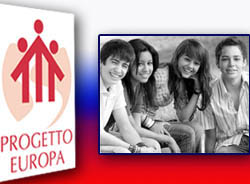

There are 2 201 798 people under 30 years living in Slovakia. Young people represent 40,68% of the total population. Slovakia, unlike other European Union countries, does not face the lack of young people, yet.
Education has undergone several changes
Significant changes were made in the field of formal education. Determination of two-level curriculum - national and school educational programme - should bring greater freedom to schools in their influence on content and methodology of the educational process. The Lifelong Learning Act envisages the creation of a national qualification frame work, to align learning results with the labour market needs, equal formal and further education and to encourage participation in further education.
Unemployment of youth is high
The unemployment rate in Slovakia in December 2009 reached 13,6%, while youth unemployment in the same period reached 32,9%. This means that Slovakia has the third highest youth unemployment rate of young people under the age of 25 years in the EU member countries.
Many information and advisory services have been established in order to support employment.
Despite the measures above, a major challenge in the employ - ability of young people is the solution of their long-term unemployment and their consequent unemployed ability because of the lack of skills and work habits. Another challenge is the continuing discrepancy of formal education with the labour market and the associated decline of higher level of university/tertiary education, which often fails to prepare graduates for the realities of the labour market.
Impact of family on youth life
Young people largely do not run their own affairs in Slovakia. This does not favour either the prevailing idea in families where a child’s future is rather linked to finding a good job than the career of the entrepreneur.
Most of the Slovak population get married at least once in a lifetime. The demographic
data show that the average age of marriage is increasing. The present situation is characterized by: expanding the forms of family life, changes in family life, structure and size, as well as the labour and employment impact of parents on family functioning. Due to a growing work load on parents, stress, breakdown of traditional family size and the neighborhood, the conditions for children living in families and communities is becoming increasingly difficult.
Children often suffer from loneliness and in their familiar and virtual surroundings are looking for counsellors, friends. Who are not always found. In some areas as children overtake their parents’ andtheir teachers’ knowledge traditional relationships between children and adults are changing.
The decline of the birth rate and of marriage, as well as increase in divorce, affects the changes in the structure and size of families.
Youth spend their leisure time in different ways
Young people have an average of four hours of leisure time per a day. Unemployed young people have most free time - up to seven hours a day – and these are not involved in youth organizations. Young people spend most of their free time at home or with friends. Information on how to spend free time they obtain mainly from friends and via Internet. Parents of younger children have great influence on spending free time, who are focusing on organizations more narrowly. Organized forms of leisure time activities are regularly confined to less than 16% of young people, out of which over 86% are children under 14 years. Older youngsters prefer individual and unorganized forms of spending leisure time.
The offer of organized leisure time activities does not sufficiently reflect the needs of young people and thus is not very attractive for them. In the case of younger children it is often financially demanding. Closer cooperation, related to the use of school facilities between schools and youth organizations is still lacking to complement each other for the empowerment of young people.
Young people are increasingly seeking innovative ways of disseminating information using modern technologies, especially the Internet, email, to exchange views and experiences in real time via video-conferencing and so on.
Compared to young people living in larger settlements, young people in rural areas have fewer opportunities. Rural youth are considered disadvantaged in terms of the availability of education, employment opportunities, information, internet,. leisure facilities and services in rural regions are significantly underdeveloped in terms of structure, scope but also the quality of services in comparison to urban regions.
This report has been prepared by IUVENTA – Slovak National Istitute (abbreviated)
(spring 2010)
